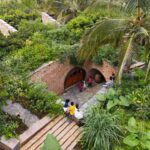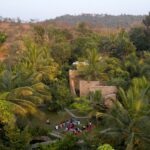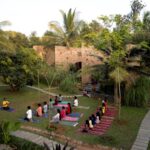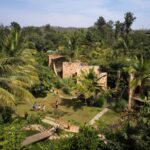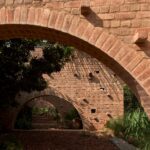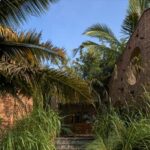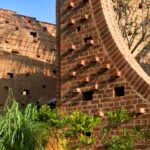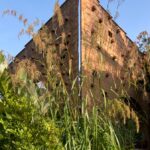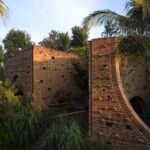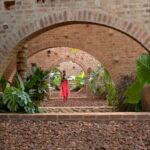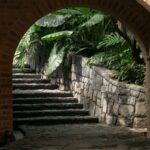Located 40km south of Bengaluru city, Kaggalipura boasts a 3-acre fruit orchard surrounded by lush vegetation. A Threshold, the architectural firm behind the project, saw the site’s potential for innovative design, blending seamlessly with the natural terrain.
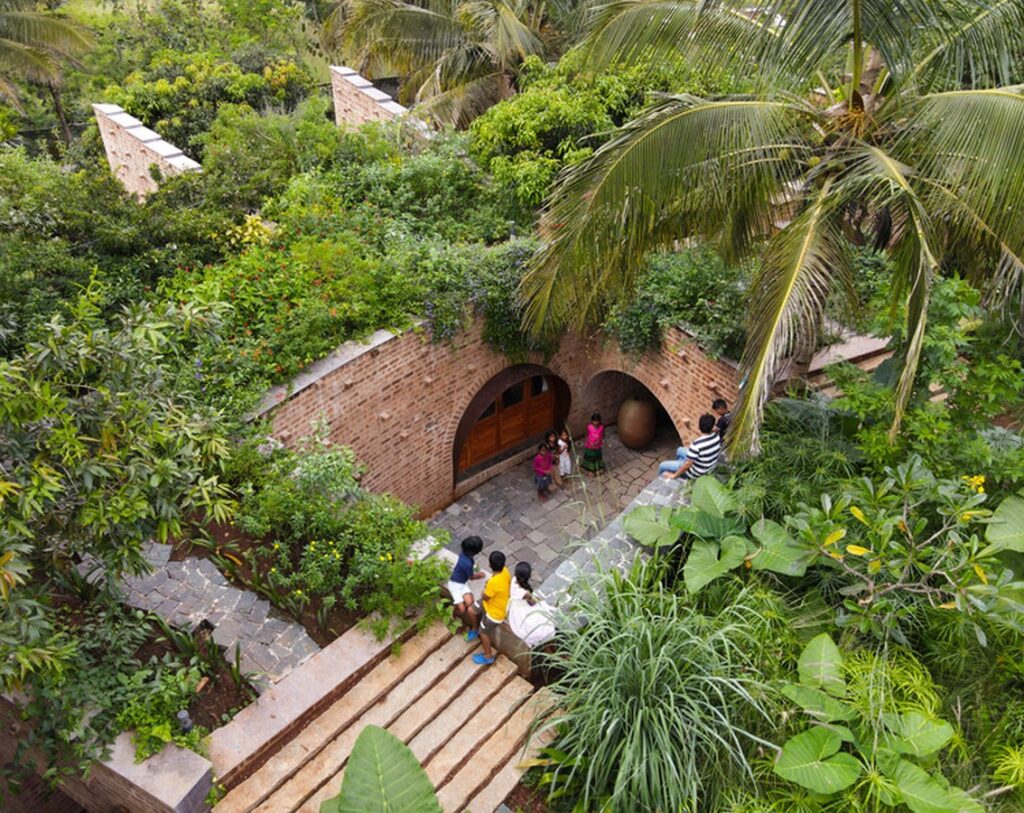
Sustainable Design
The sloping landscape provided an opportunity to implement a rainwater collection system, supporting existing farming practices. With a steep drop of four meters, the building was nestled into the landscape, minimizing excavation. The design prioritized thermal comfort, with the southern side sunken to mitigate heat gain and the northern side open to maximize natural light.
Conceptualization
Inspired by the idea of multifunctional caves integrated into the earth, the design evolved to resemble unfinished ruins, harmonizing with the existing trees and terrain. Over time, the structures are envisioned to become one with nature, blending seamlessly into the landscape.
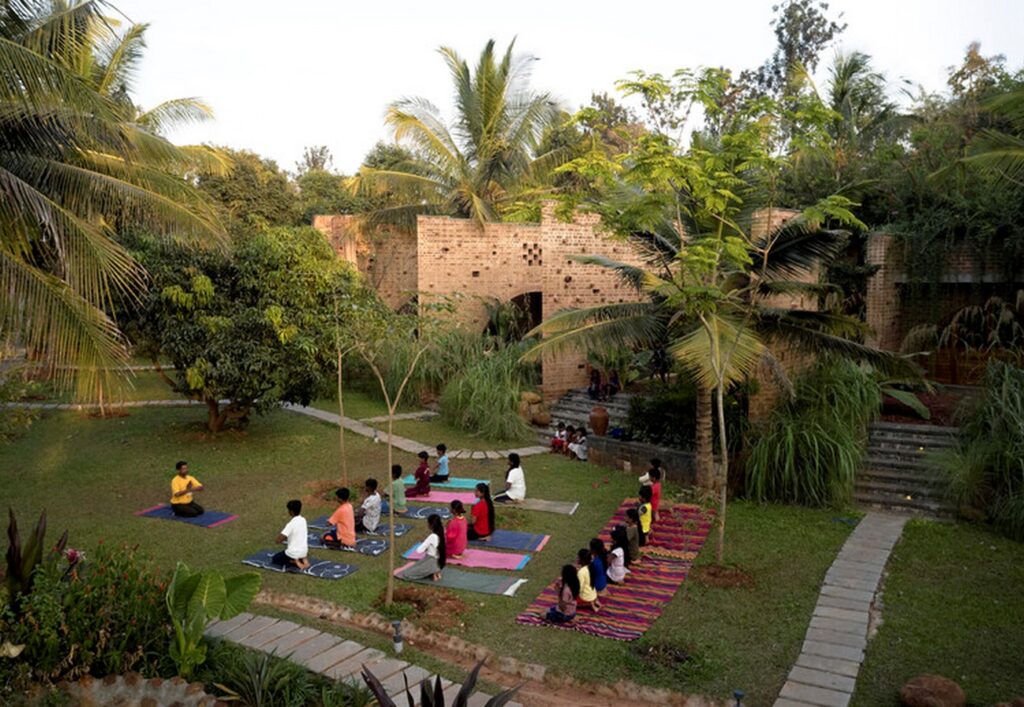
Local Materials and Craftsmanship
Local sourcing was central to the project’s ethos, with materials such as boulders and rocks excavated from the site used for construction. Skilled artisans and craftsmen from the Kaggalipura village were engaged in the building process, fostering community involvement and preserving traditional craftsmanship.
Flexible Program
The design offers a versatile program that adapts to various activities over time. Spaces are envisioned to serve multiple functions, supporting the local community’s diverse needs. For instance, caves can host school classes, while open courts facilitate recreational activities and artisan workshops.
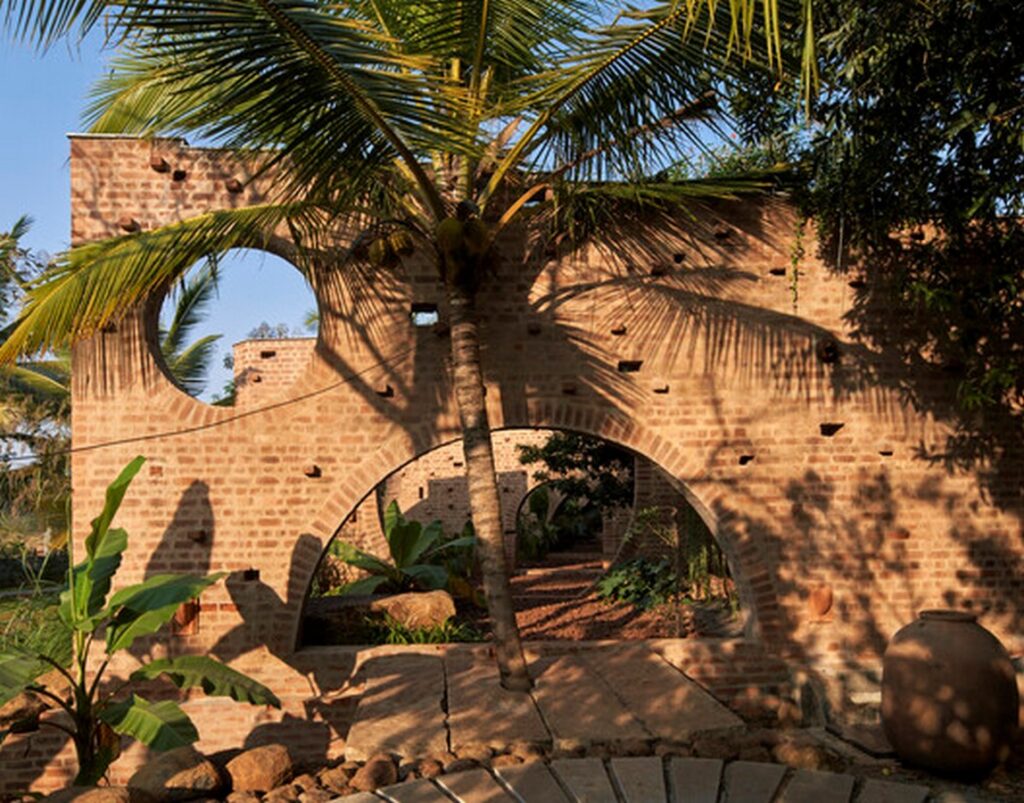
Community-Centric Approach
Rather than a traditional farmhouse, the design prioritizes flexibility and community engagement. Spaces are designed to accommodate a range of activities, from educational programs for children to support for local artisans. The built and unbuilt elements complement each other, offering a dynamic environment for residents and visitors alike.
Integration with Nature
Void spaces around existing trees are imagined as versatile areas for homestays, schools, community gatherings, and artist residencies. This approach fosters a deep connection with nature while promoting sustainable living and community interaction.


